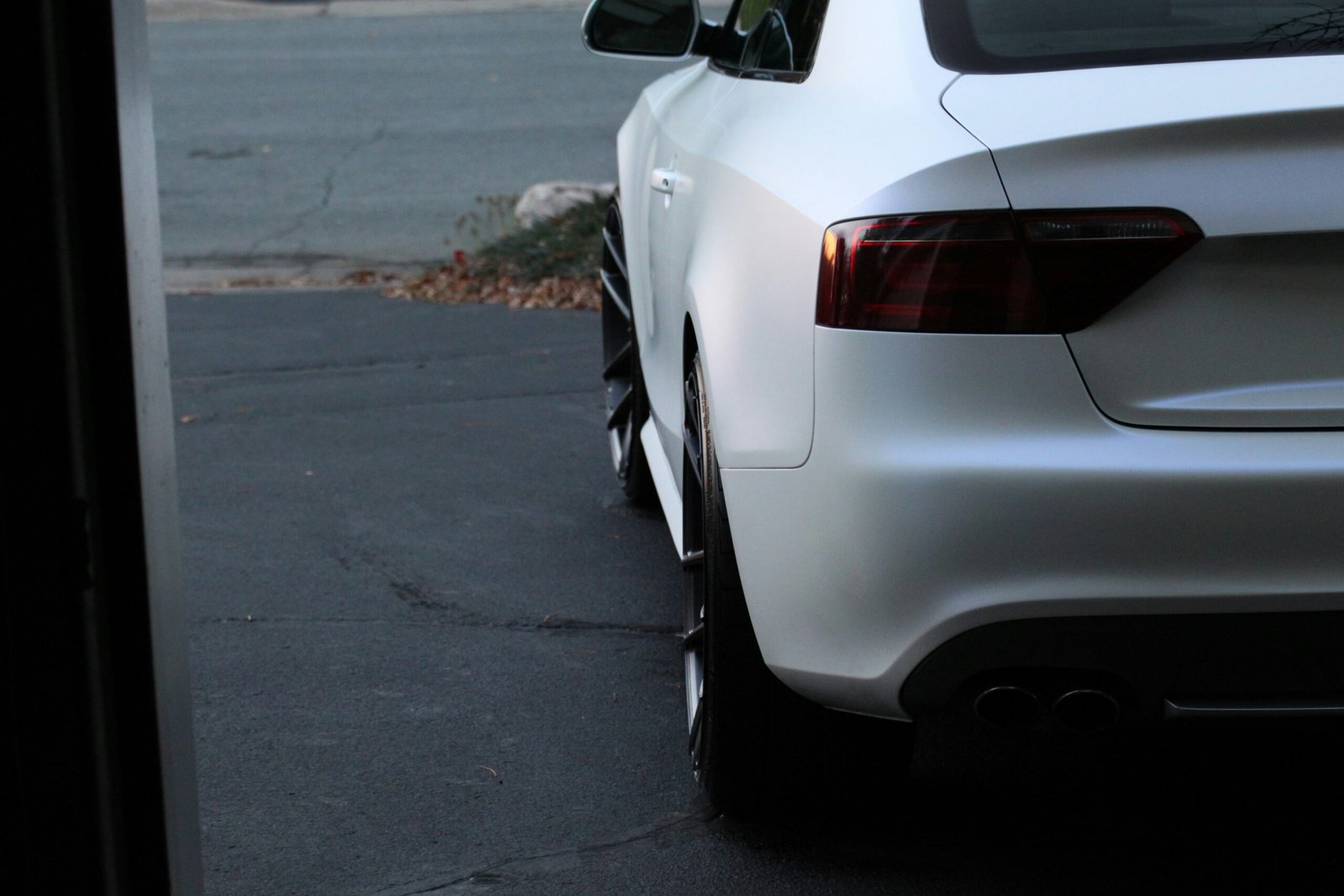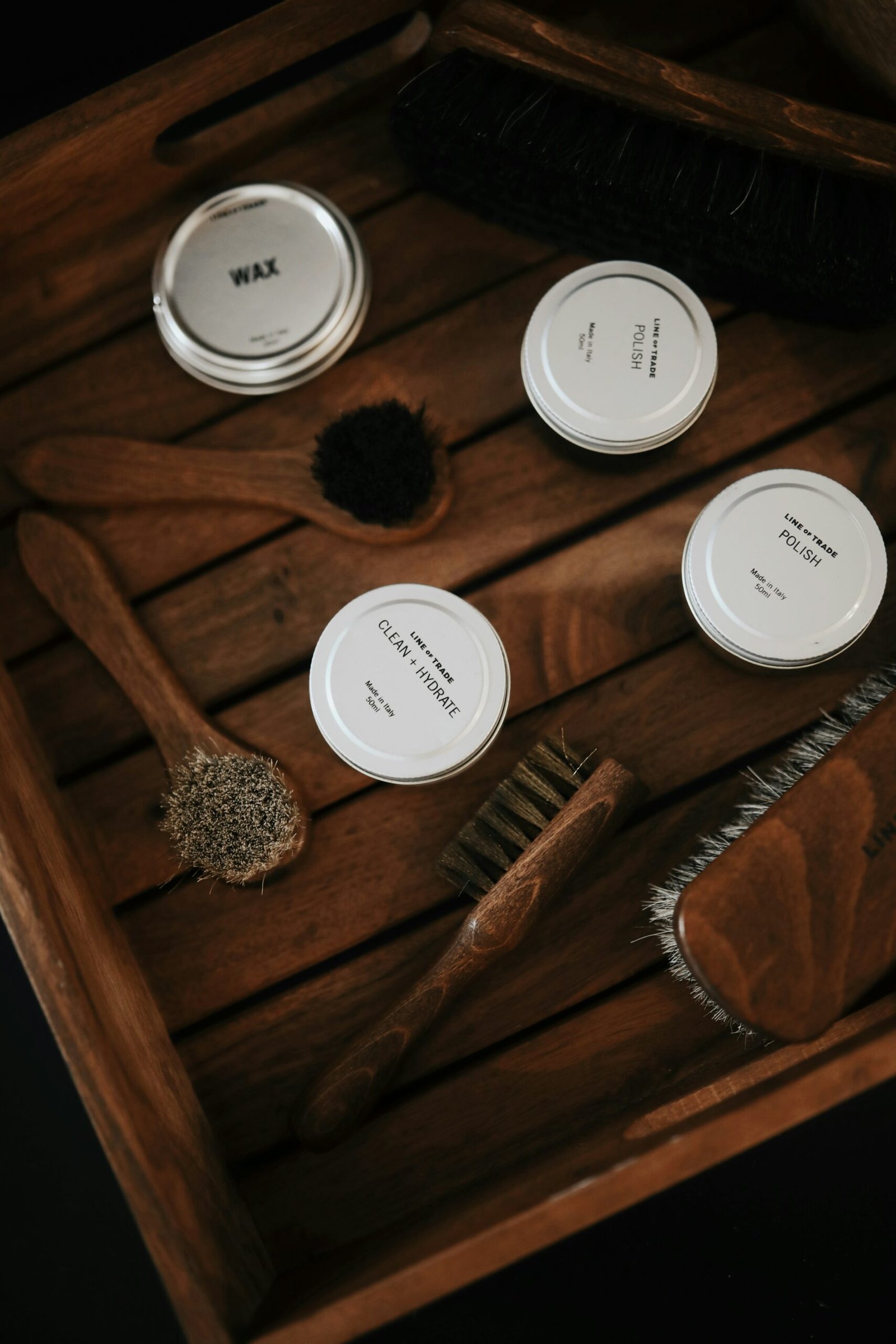Introduction to Car Window Tinting
Car window tinting involves applying a thin, transparent film to the glass surfaces of a vehicle. This process serves a variety of purposes, ranging from enhancing the vehicle’s aesthetic appeal to providing numerous functional benefits. The growing popularity of car window tinting among car owners can be attributed to its ability to enhance privacy, protect against harmful UV rays, and improve overall cabin comfort.
One of the most sought-after benefits of window tinting is enhanced privacy. Tinted windows deter prying eyes from peering into the vehicle, providing occupants with a sense of security, especially in urban settings. In addition, tinting can help to conceal valuable items left within the car, reducing the risk of theft.
Furthermore, car window tinting offers significant protection against harmful ultraviolet (UV) rays. Research indicates that prolonged exposure to UV rays can lead to skin damage and contribute to various health concerns. Tinted windows can block up to 99% of these rays, making car travel safer for occupants. Additionally, this form of tinting helps protect the car’s interior materials from fading, thus preserving its aesthetic value over time.
Temperature control is another notable advantage of window tinting. By reducing the amount of solar heat that enters the vehicle, tinted windows contribute to maintaining a more comfortable cabin temperature, thus reducing the reliance on air conditioning. This not only enhances passenger comfort but can also improve fuel efficiency, as less energy is required to cool the vehicle.
In summary, car window tinting is a multifaceted enhancement that caters to the diverse needs of vehicle owners. Its advantages extend beyond aesthetics, encompassing essential aspects of protection, privacy, and energy efficiency, making it a worthwhile consideration for many. As we delve into the DIY aspects of tinting, understanding these benefits sets the groundwork for a practical and informed approach.
Advantages of DIY Window Tinting
Embarking on a DIY window tinting project can offer numerous advantages over opting for professional installation. One of the most significant benefits is the substantial cost savings associated with performing the task yourself. Professional window tinting services can be costly, often including labor fees in addition to the price of the materials. By choosing to tint your car windows at home, you can purchase the necessary tint film and tools without incurring additional charges, allowing you to achieve a more budget-friendly solution.
Customization is another key advantage of DIY window tinting. When you take on the project yourself, you have the liberty to select the specific tint shade and type that best suits your preferences and vehicle aesthetics. Whether you desire a darker tint for enhanced privacy or a lighter one for a sleek look, DIY window tinting allows you to tailor the outcome precisely to your liking, ensuring that your car reflects your personal style.
Additionally, there is a sense of fulfillment and accomplishment that arises from successfully completing a DIY project. The satisfaction derived from creating something with your own hands can be profoundly rewarding. Not only does this boost self-confidence, but it also generates a sense of ownership over the modifications you make to your vehicle. Learning through the DIY experience further enhances this benefit, as you acquire valuable skills in film application, vehicle care, and even basic troubleshooting for any potential issues that may arise during the process.
Moreover, the flexibility of time that a DIY approach provides cannot be overlooked. With professional scheduling often limited, DIY window tinting allows you to work at your own pace, fitting the job into your own timetable without the pressure of adhering to someone else’s availability. Overall, the advantages of DIY window tinting extend beyond mere cost savings, encompassing customization, personal satisfaction, skill development, and flexibility.
Disadvantages and Challenges of DIY Window Tinting
While DIY car window tinting may appear appealing due to its cost-saving potential, there are several disadvantages and challenges that can arise throughout the process. One major concern is the risk of making mistakes that may result in unsatisfactory results. Inexperienced individuals may struggle with applying the tint evenly, leading to bubbles, creases, or misalignment. Such imperfections can detract from the aesthetic value of the vehicle, potentially necessitating expensive reapplication. The learning curve associated with proper installation techniques is steep, and many may find themselves dissatisfied with their first attempt at window tinting.
Moreover, the choice of materials can significantly impact the performance and longevity of the tint. Using low-quality window film may result in fading, peeling, or discoloration over time, undermining the investment made in the tinting project. It is crucial to select high-quality materials that offer adequate UV protection, heat rejection, and longevity. However, these premium options tend to come at a higher cost, which could reduce some of the initial savings anticipated from a DIY approach.
This process can also be extremely time-consuming. Proper application requires meticulous attention to detail and patience, often demanding several hours to ensure a professional finish. This time commitment can be for naught if the final results do not meet the desired expectations. Additionally, potential legal restrictions in various states regarding tint darkness and placement pose further challenges. Some jurisdictions have specific regulations governing how dark tint can be and where it may be applied, which may complicate the DIY process for those unaware of these laws.
Tools and Materials Needed for DIY Tinting
Undertaking a DIY car window tinting project requires careful preparation, specifically in terms of selecting the appropriate tools and materials. The first essential component is the window film itself, which comes in various types, such as dyed, metalized, carbon, and ceramic films. Each type offers distinct benefits and can impact the heat rejection, UV filtering, and appearance of the vehicle. It is imperative to choose a film that adheres to local regulations regarding tint darkness, as non-compliance may lead to legal repercussions.
Application tools play a critical role in achieving a professional-looking finish. Essential tools include a squeegee, which is used to smooth out the film and remove air bubbles, and a utility knife or razor blade for precise cutting. A measuring tape is necessary to ensure accurate sizing of the window film before application. Additionally, a heat gun can be beneficial for conforming the film to curved surfaces, making it easier to achieve seamless apparel.
Cleaning supplies are equally important, as they help prepare the windows for adhesion. A basic cleaning solution—typically a mix of water and mild detergent—along with a lint-free cloth will ensure that the glass surface is free from dirt, grease, and grime. It is important to meticulously clean the windows before applying the film to prevent imperfections. Protective gear is also advisable; wearing gloves will help avoid fingerprints on the film, while safety glasses can protect against any flying debris when cutting the film.
In summary, a successful DIY window tinting project hinges on having the right tools and materials at your disposal. Carefully selecting high-quality window film and utilizing appropriate application tools, cleaning supplies, and protective gear will not only streamline the process but also enhance the end result. This preparation is what sets the foundation for a well-executed tinting job.
Step-by-Step Guide to Tinting Car Windows
Tinting car windows can significantly enhance both the appearance and functionality of your vehicle. To embark on this DIY project, it is crucial to follow a systematic approach to ensure a professional result. Here is a detailed step-by-step guide to successfully tinting your car windows.
The first step is to prepare the windows. Thoroughly wash the glass surfaces using a glass cleaner to eliminate all dirt, dust, and grease. This preparation is vital as any residue can spoil the tint application. After cleaning, it’s advisable to roll down the windows for a few minutes. This allows the rubber seals to dry completely, ensuring no moisture interferes with the adhesive.
Next, measure the windows where you plan to apply the tint film. Use a tape measure to get accurate dimensions, noting the curvature and angles of each window. When cutting the film, allow for a bit of excess material on each side, as trimming to fit is easier than starting too short. It’s recommended to lay the film on a flat surface and use a utility knife for precise cuts, ensuring you maintain straight lines for a clean finish.
Once your film is cut, you are ready to apply it. Begin by misting the window with a solution of water and a few drops of dish soap. This solution allows for better positioning of the film and prevents it from sticking immediately. Carefully position the film against the window, ensuring that it is aligned correctly. Use a squeegee to press out air bubbles and excess liquid, working from the center towards the edges.
After the application, you can trim any excess film with the utility knife for a clean edge. Let the tint cure for at least 24 to 48 hours before rolling the windows up again or cleaning the glass. By following these steps and adhering to tips for a clean application, you can achieve a professionally tinted look that enhances your vehicle’s aesthetic and functionality.
Maintenance and Care for Tinted Windows
Proper maintenance and care for tinted windows are crucial for preserving their appearance and extending their lifespan. After the application of window films, it is essential to follow specific guidelines to ensure that the tint remains in optimal condition. Initially, it is advisable to wait at least 48 hours before cleaning the tinted windows. This allows the adhesive to properly bond with the glass, reducing the risk of damages or peeling.
When it comes to cleaning tinted windows, use a soft microfiber cloth or a sponge combined with a mild soap solution or a specialized car window cleaner. It is imperative to avoid harsh cleaning products, particularly those containing ammonia, as they can deteriorate the film over time. Avoid abrasive materials that can scratch or damage the tint. Instead, opt for non-abrasive options that are specifically formulated for tinted windows to maintain clarity and protect the integrity of the film.
In addition to cleaning, it is important to monitor the condition of the window tint regularly. Look for signs such as bubbling, peeling, or discoloration, which could indicate that the film is failing. If any of these issues arise, it is prudent to consult a professional for repairs or replacement. Neglecting these signs can lead to further damage, making a timely intervention necessary.
Furthermore, when parking your vehicle, try to avoid prolonged exposure to direct sunlight, as excessive heat can adversely affect the adhesive. Using sunshades can be beneficial in this regard. Regularly inspecting the edges of the tinted windows for any lifting is also recommended, allowing for timely corrective measures. By adhering to these maintenance practices and caring for tinted windows diligently, owners can ensure that their investment remains appealing and functional for years to come.
Legal Considerations for Window Tinting
When undertaking a DIY car window tinting project, it’s crucial to be aware of the legal considerations that affect the use of window films. Each state in the U.S. has specific regulations that dictate the allowed levels of tint darkness and the reflective properties of window films. These rules are designed to enhance safety and visibility for both the driver and other road users.
For instance, some states allow a certain percentage of light to be filtered through the tint, while others may impose stricter limits based on window location and vehicle type. Laws often differentiate between front windshields, side windows, and rear windows. In general, most jurisdictions permit darker tints on rear windows compared to those on the front. Additionally, reflective properties are closely monitored, with restrictions on how much light can be reflected off the windows. High reflectivity can pose hazards by interfering with the visibility of other drivers, particularly during bright daylight.
Furthermore, there are special considerations for certain vehicle types, such as vans and SUVs, which may have different requirements compared to standard sedans. Before embarking on a DIY tinting endeavor, it is essential to consult your local laws and understand the specific regulations that may apply to your situation. Ignoring these legal guidelines can lead to substantial fines or even the mandatory removal of the tint, which can negate the effort and expenses put into the project.
In summary, ensuring compliance with regional laws and regulations is an integral part of the DIY window tinting process. By being informed and prepared, you can enjoy the benefits of window tinting while avoiding potential legal repercussions.
Common Mistakes to Avoid When DIY Tinting
Undertaking a DIY car window tinting project can be an exciting endeavor, but it is crucial to be aware of common mistakes that many novices encounter. One prevalent error is inadequate preparation of the car windows. Failing to properly clean the windows before applying the tint can lead to bubbles and imperfections in the film. Dirt, dust, and oils can become trapped beneath the tint, making for an unsightly appearance. To avoid this, ensure that the glass is thoroughly washed and dried, using a lint-free cloth and a suitable glass cleaner.
Another frequent mistake is misjudging the cutting of the tint film. Improper measurements can result in misalignment, where the tint does not fit the window’s dimensions correctly. This can not only detract from the aesthetic appeal but also diminish the effectiveness of the tinting. It is advisable to measure twice and cut once, taking careful note of the contours of the window to achieve a precise fit.
One should also be cautious about the environment in which the tinting occurs. Applying tint in direct sunlight or extreme temperatures can affect adhesion and cause bubbles or peeling. Ideally, tinting should be performed in a controlled indoor environment, where temperature and humidity are regulated. Additionally, some users overlook the importance of using quality materials, opting instead for cheaper alternatives that may not adhere well or provide adequate UV protection.
In conclusion, avoiding these common pitfalls can enhance the overall success of your DIY car window tinting project. By paying attention to preparation, cutting accuracy, environment, and material quality, you can significantly improve the final results and enjoy the benefits of well-tinted windows.
Conclusion: Is DIY Window Tinting Right for You?
Ultimately, the decision to undertake DIY car window tinting hinges on various personal factors, including your skill level, available time, and budgetary constraints. This method of window tinting allows for a more hands-on approach, giving individuals the freedom to choose their preferred tint and control the installation process. However, this freedom does come with a set of responsibilities and potential challenges that vary from one person to another.
For individuals possessing a good level of dexterity and familiarity with DIY projects, the satisfaction derived from successfully applying window tint could be gratifying. These individuals typically have the confidence to navigate the intricacies of the installation process and can follow detailed instructions effectively. Conversely, those lacking experience may find the task daunting, potentially leading to mistakes that could damage the vehicle or result in improper installation.
Time availability is another significant factor. DIY window tinting can be a time-consuming task, often taking several hours to complete depending on the vehicle size and the number of windows involved. Individuals who have limited free time may find it challenging to set aside appropriate time for this project. Additionally, improper installation can lead to costly corrections, making the decision even more critical.
Budget considerations should not be overlooked, as DIY window tinting may seem like a cost-effective solution compared to professional services. However, upfront savings can diminish if tools, materials, or potential corrections are needed after the fact. Therefore, evaluating personal circumstances, including skill level, time constraints, and financial situation, is essential in determining whether DIY window tinting is the right choice for you. Weighing the pros and cons thoroughly will help ensure a well-informed decision in this regard.



